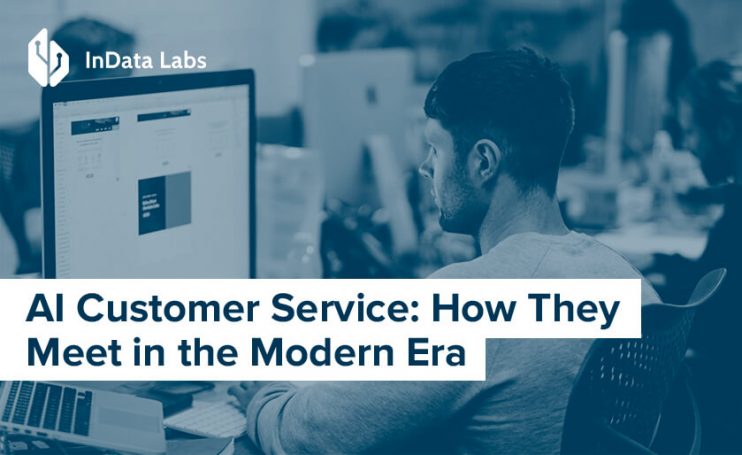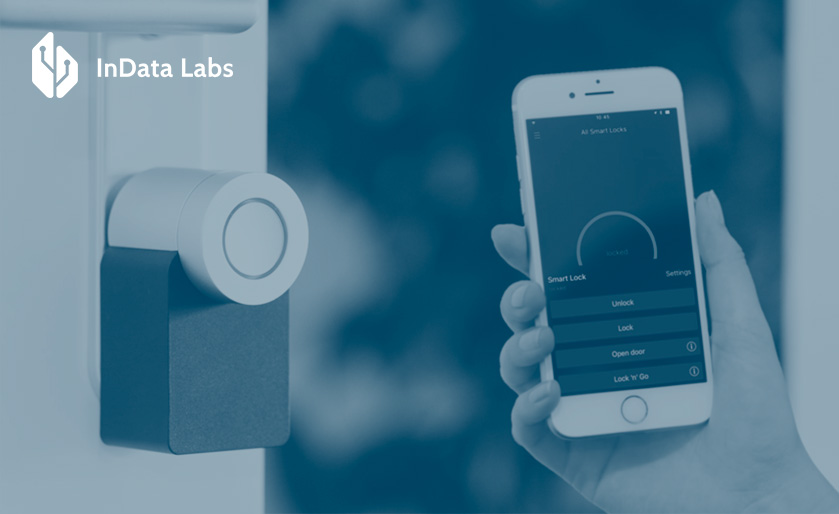Every modern business needs a solid customer relationship management (CRM) strategy and artificial intelligence customer service to ensure continued success. Today, many enterprises are harnessing the power of artificial intelligence (AI) to automate and enhance their CRM and the experiences they offer customers.
Sophisticated modern technologies like AI-enabled communication and chatbots have made it possible for businesses to offer intuitive customer service and B2C interactions 24 hours a day. This has had knock-on implications for the level of service that today’s human customer expects, too. People now expect access to information and support instantly at the touch of a screen. And AI customer service can provide it.
As businesses interact more with their customers through human interactions, chatbots, automated data extraction, and even email drip campaigns, these touch points allow them to collect more data about their customers and their preferences. This data collection has allowed for a new level of personalization in marketing. But it also causes the use of powerful tech to stay ahead of the game.
The global market value for AI-based CRM software grew 12.3% from 2014 to 2015 alone, revealing the growing demand for this technology. AI integration spurs this increase in popularity within the key platforms that enable businesses to operate.
AI for business is encouraging rapid evolution within the commercial sector, especially for CRM. Businesses should be at the forefront of this trend to maintain a competitive edge in an increasingly interconnected world.
What Is AI Customer Service?
AI-powered customer service bots are increasingly replacing real human customer support agents in the business world. They can handle multiple tasks simultaneously and without error. This has made them valuable as interfaces between companies and their customers.

Source: Unsplash
AI bots can handle various tasks, interact with potential customers, troubleshoot, and determine instant solutions to many, varied challenges. They can assist massive volumes of customers 24/7 without the intervention of human staff members—abilities that have placed them at the front line of customer engagement strategies.
Using chatbots as the initial mode of interaction between consumers and businesses can help identify customers’ needs. They do this to pinpoint more complicated issues and ensure that the right support personnel is dealing with them. Plus, it reduces the amount of research that human customer support teams need to conduct to answer consumers’ questions. In doing so, it streamlines the support process considerably.
These bots can proactively begin conversations with consumers, supply them with relevant information, and assist with each touchpoint in a business’s customer life-cycle. Essentially, AI gives customers the answers they need, exactly when they need them, without having to wait for available support agents. This can dramatically reduce the time required to resolve issues and ensure customer satisfaction.
Chatbots can transfer calls to human service agents if human intervention is necessary. This can give productivity a much-needed boost. It frees agents up to handle only more complex cases that truly require their expertise while allowing them to skip basic questions about store hours and return policies.
Artificial intelligence customer service bots provide two key benefits to businesses:
- Save customers’ time
- Provide customers with a seamless and professional experience with the company they are interacting with.
They are also remarkably cost-effective to implement, which makes them attractive to enterprises of all sizes.
How to Use AI in Customer Service
So, how is AI used in the rise of customer service today? AI customer service solutions have a wide range of applications, spanning from biometric identification to the predictive personalization of marketing campaigns. AI’s most promising applications in customer service include:
Biometrics
AI technology can identify customers in several ways. Physical biometric technologies analyze physical traits of the human body, such as fingerprints, irises, or facial characteristics. Behavioral technologies analyze traits such as voice, gait, or interactions with a specific device.

Voice and Facial Recognition
AI-based algorithms can analyze and encode voice characteristics with data and recognize a face to find matches to existing customer profiles. Characteristics that do not match existing profiles can instantly classify new or potential customers to streamline the lead generation process.
This information may help identify and authenticate customers. It allows customer service professionals to greet them personally, while simultaneously reducing the risks of fraud and identity theft.
Emotion Analytics
Artificial intelligence is also put to use to assess individuals’ verbal and non-verbal communication to gauge their attitudes and moods. This customer analytics technology can classify customers’ moods and route them to the correct agent or team to address their concerns to their satisfaction.
Intent Prediction
Intent prediction technology can identify consumer behavior patterns that show a specific intent based on their web activity or text communication. This allows bots to route calls to the correct agents and enables call center departments to provide customers with the help they need in the style they’d prefer to receive it.

Source: Unsplash
Customer Support Chatbots
According to Oracle, 80% of marketing and sales leaders currently use—or are planning to launch—chatbots on their business platforms. Customer satisfaction AI bots can collaborate with human agents to optimize interactions between customers and businesses, enhancing human ability and supplementing human intelligence.
They can scale seamlessly as the businesses that use them grow, offering a consistent level of support regardless of how many customers require it.
NLP Analysis
Natural Language Processing (NLP) is a manner of using computer algorithms to gain analytical insights from written text or speech. Companies can use AI to conduct NLP analyzes and gauge customers’ perceptions of specific topics, posts, and methods of B2C communication. They can use it to extract product complaints, compliments, and reviews from online posts to handle issues and improve the levels of service they offer.
Predictive Personalization
Businesses that use AI service customer satisfaction technology likely have massive amounts of customer data at their disposal. They can use this to personalize the service and recommendations they offer their consumers and provide customized retention offers to increase their customer retention rates.
Predictive System Maintenance
Artificial intelligence can even predict and prevent major technical and maintenance issues before they occur. This technology can boost network performance and rapidly troubleshoot issues, but it has real-world applications, too.
For example, logistical giant UPS has reportedly saved millions of dollars by using an AI predictive maintenance bot that reduces the incidence of breakdowns of its delivery trucks.
Improving Customer Satisfaction AI and Rise Customer Service Rates
Businesses operating in all major industries can raise customer service and improve their consumer satisfaction rates using AI technology. Customer experience (CX) teams can use predictive analytics to keep customers stocked up on their favorite products, notify them of new items they might enjoy, and offer other personalized recommendations using the data got through AI bot usage.
AI bots can foster more effective customer engagement. A superior customer experience is a key to driving lasting brand loyalty. In this PWC survey, respondents noted they would be more willing to try new products from brands that offered better customer experiences. Plus, they were willing to pay up to 16% more for those products.

Source: Unsplash
Intelligent chatbots can even inform customers about new products, special promotions, rise customer service number rates, and upcoming events. They can notify users about the status of their orders and returns, encourage them to reorder essential products when they are on sale, and remind them to use loyalty points and other promotional offers before they expire.
The use of artificial intelligence customer satisfaction is a rapidly growing movement in the business world today. Understandably, it’s showing no signs of abating soon. Custom AI bots enable businesses to offer their target audiences personalized offerings and communications tailored to meet their specific requirements.
Ensuring consumer satisfaction is simpler, and more automated than it has ever been before. This leaves companies with more free resources to focus on delivering exceptional products, services, and marketing campaigns.
Artificial intelligence automates repetitive manual tasks and arduous labor. This enables skilled and creative teams of people to divert their efforts to the areas of their businesses that truly need their human innovation.
How Long Has Artificial Intelligence (AI) Existed?
The field of AI was formally established in 1956 during a conference at Dartmouth College in New Hampshire. MIT cognitive scientist Marvin Minsky and his peers who attended the conference were very optimistic about the future of AI. But creating artificially intelligent beings was not as simple as it may have seemed at the time.
After the ‘AI Winter’ of 1974–80, the British government funded the field once more in the 1980s. Only to experience another drop in government funding and interest between 1987 and 1993. Research picked up once more in the mid-90s, culminating in IBM’s Deep Blue machine defeating Russian-born chess grandmaster Garry Kasparov.

Source: Unsplash
Later in 2011, the computer’s AI system won the infamous quiz show Jeopardy!, securing a victory against reigning champs Brad Rutter and Ken Jennings. Some scientists are now planning to revise the Turing test—the original test developed by Alan Turing in the 1950s that was first used to measure artificial intelligence—to further expand the boundaries of the technological field.
According to future AI predictions from Finances Online, the artificial intelligence of the future could offer faster response times, reliable operation while intermittently connected, close compliance, better security, and improved cost efficiency.
It’s predicted to be more capable of solving business-related hurdles, produce neural network-generated artworks, and appear in courtrooms and justice systems through the use of facial recognition.
What Are the 3 Stages of AI?
Artificial intelligence isn’t a simple, static concept. It’s constantly changing and improving as our understanding of data science and technology develops.
With this evolution comes changing data regulations, and a greater understanding of how AI integrates into new and flexible applications. As AI evolves in the future, so too will the regulations surrounding its use, and the applications it integrates with.
There are three primary types, or stages, of artificial intelligence:
- Narrow/weak AI (ANI)
- General/strong AI (AGI)
- Artificial superintelligence. (ASI)
So far, we have only achieved narrow or weak AI. Some prime examples of narrow AI include virtual assistants like Alexa, Cortana and Siri, image and face recognition software, AI customer service, and social media monitoring tools.
As the capabilities of machine learning continue to expand and scientists inch closer to achieving strong AI, experts in data science services are confident that humans and bots will be able to mutually use artificial intelligence as a tool to improve human life experiences.
Should we choose to pursue AI software development and create artificial superintelligence, bots powered by ASI would be more cognitively capable than humans are. Customer satisfaction AI bots would also be exponentially better equipped to provide a truly futuristic experience to the consumers of the future.
Takeaway
AI and customer satisfaction are no longer mutually exclusive. Building customer loyalty takes plenty of time and diligence. Using AI in customer service can build bridges between consumers and businesses to make it easier to foster loyalty and trust alike.
More companies than ever before are using AI bots to deliver a world-class customer experience and secure their share of an increasingly competitive global market. This is evidenced because 61% of surveyed organizations are planning to employ a Chief AI Officer soon.
Artificial intelligence, including big data, computer vision in AI, and machine learning can give businesses an edge for better understanding their consumers and more accurately predicting their purchasing behaviors.
Analyzing consumers’ behavioral patterns allows companies to offer them products and content that they are more likely to appreciate. Doing so will enhance their experience when interacting with AI-partnered brands while ensuring that they leave each interaction feeling as though their needs are met and their voices heard.
Author Bio:
Kristie Wright is an experienced freelance writer who covers topics on logistics, finance, and management, mostly catering to small businesses and sole proprietors. When she’s not typing away at her keyboard, Kristie enjoys roasting her own coffee and is an avid tabletop gamer.
Level Up Your Customer Service with Custom AI Solutions
Looking for a way to enhance customer service and improve customer experience and loyalty? Discuss your thoughts with our tech team by arranging a call.



